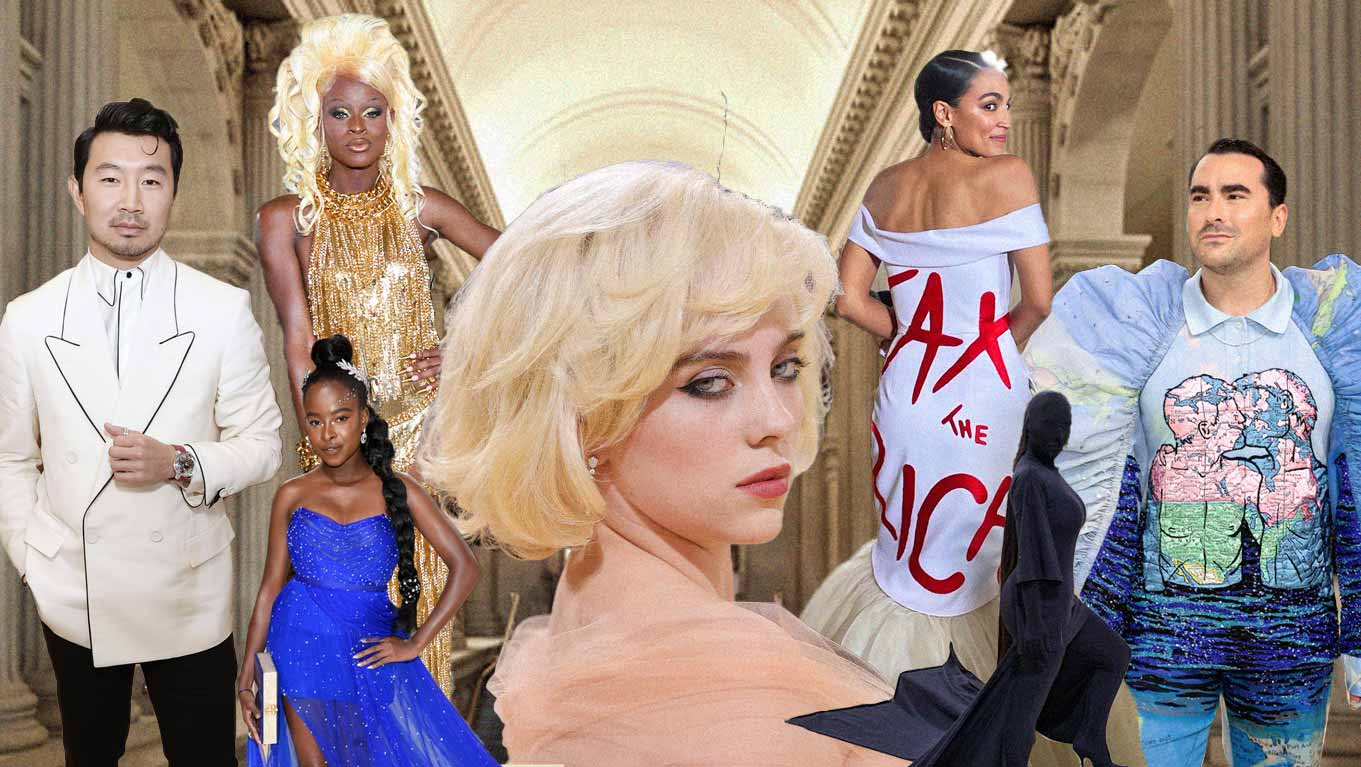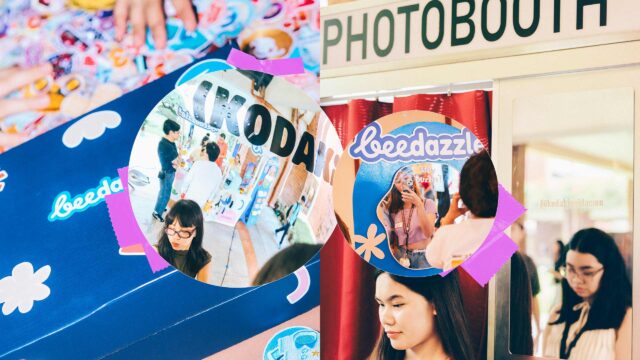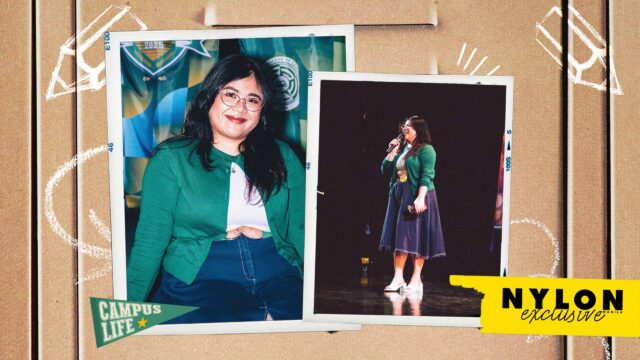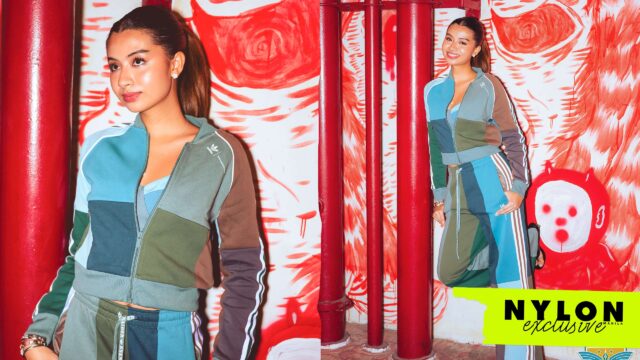Seeking a singular definition of American fashion at the Met Gala may have been a futile attempt, because as always, the night’s theme was up for interpretation. The dress code? American independence.
“We are striving to forget a union with purpose, to compose a country committed to all cultures, colors, characters and conditions of man,” writes National Youth Poet Laureate, Amanda Gorman, in her piece, The Hill We Climb, which she read at the inauguration ceremony of the US heads of state. Grounded in reality, the insightful and inspiring poem was a reminder that not all hope was lost. On the contrary, she underscores that this was just the beginning of something greater in history, which singlehandedly brought their nation, the rest of the world watching included, to its feet with faith renewed and spirits restored. Crisp, clear, and commanding, her words of rousing resolve would eventually find its way into the tapestry of the 2021 Met Gala, where she is co-chair. “Being American is more than a pride we inherit, it’s the past we step into and how we repair it.”
While it certainly is no first Monday of May, as is tradition to the Met Gala calendar, the glorious return to the hallowed and historical halls of the Metropolitan Museum of Art in New York city was a clear indication that life is skewing more and more to the normal we once knew of in close to two years. Sure, it may have fallen on a nondescript second Monday of September, and was decidedly careful and significantly more pared down than its typically extravagant past, but it was a celebration nonetheless, especially with the liberties now accorded to their side of the world.
But more than just emerging from an era of ease and comfort, the 2021 Met Gala sought to begin the lofty conversation of “what makes American fashion?”
Second Monday Of September
An expansive exploration of expression, the Met Gala, together with the Costume Institute exhibition it was built to be a fundraiser for, has taken on a tall order. Describing American fashion squarely and singularly is an existential exercise in itself, one that is constantly redefined by seasonal cycles, market demands, and generational movements, but in this expansive exploration of expression is further guided by the enclosed dress code: American independence.
“The idea of reducing American fashion down to one definition is totally antithetical to what the exhibition is about,” asserts Andrew Bolton, curator in charge of the Costume Institute, of what stands to be a revisit of the 1998 exhibit, American Ingenuity. In the further realization of this undertaking in a time of immense grief and loss, the intention was to consider what the freedom that the United States so greatly exalts means in the context of today. While it is a comprehension that is for the most part insular, the layers (or concurrent lack thereof) one wears play a profound role in shaping an identity.
“I think that the emphasis on conscious creativity was really consolidated during the pandemic and the social justice movements,” details Andrew Bolton on the house that they have built for In America: A Lexicon Of Fashion, the exhibit that the 2021 Met Gala precedes. ”I’ve been really impressed by American designers’ responses to the social and political climate, particularly around issues of body inclusivity and gender fluidity, and I’m just finding their work very, very self-reflective. I really do believe that American fashion is undergoing a Renaissance. I think young designers, in particular, are at the vanguard of discussions about diversity and inclusion, as well as sustainability and transparency, much more so than their European counterparts, maybe with the exception of the English designers.”
So, What’s The Theme?
Where some may be left confused by the broad stroke that is American fashion and independence, as seen in the hard to shake excess of previous themes such as Heavenly Bodies: Fashion and the Catholic Imagination and Camp: Notes On Fashion, the 2021 Met Gala proved to be a seedbed of potential and possibility. Semantics and strictness aside, the night would unravel to be an intersection of the past, present, and future, all anchored on what is representative of America today.
From the graceful old Hollywood glamour of Billie Eilish in an unexpected shift from her usual, this time channeling Manilyn Monroe in Oscar de la Renta, Gemma Chan evoking a modern-day Anna May Wong in Prabal Gurung, and Emily Blunt taking inspiration from the iconic Hedy Lamarr in a star drizzled Miu Miu, to the gritty streetwear culture with the likes of Timothee Chalamet mixing the high fashion of Haider Ackermann and Rick Owens with a classic pair of white Converse high-tops, Justin Bieber rocking a refined take on his very own Drew line, and Kid Cudi edging Louis Vuitton into a more punk aesthetic, there was a lot to take in. And this was just the beginning, clearly illustrating in an end-to-end of a spectrum all that is essential to the exhibit such as joy, warmth, nostalgia, and rebellion.
A re-examination of the imprint of American fashion and its impact to a new world order, the Met Gala proved to be the place where the often looked over and treated as society’s by-the-ways to take space and make statements. Whether it be racial inclusion, as seen in the many people of color standing their ground, such as the Asian domination from the newly minted Marvel Avenger, Simu Liu, K-pop idols, CL and Rose, as well as of the emerging Filipino stronghold with Evan Mock, Hailee Steinfeld, Olivia Rodrigo, and Saweetie, who even more the colors of the Philippine flag on her shimmering Christian Cowan dress, and Lewis Hamilton, who bought out a table (estimated at $275,000) for emerging Black fashion designers Kenneth Nicholson, Theophilio, and Jason Rembert, together with superstar stylist Law Roach, model Alton Mason, singer Kehlani, and athletes Miles Chamley-Watson and Sha-Carri Richardson. Excellence indeed.
We Are Here
A lot of statements were made during the very famous night at the museum (hello Alexandria Ocasio-Cortez and her Aurora James-designed Tax The Rich dress for Brother Vellies), but none could be more meaningful than queer people living out their truth and pride at the Met Gala. With the likes of pop star Troye Sivan, Olympic diver Tom Daley, drag queen Symone, social media star Nikkie de Jager (aka Nikkietutorials who paid homage to the eternal wisdom of trailblazing American LGTQIA+ liberation activist, Marsha P. Johnson), athlete Megan Rapinoe (with her handheld statement: In Gay We Trust), actress Hunter Schaeffer, model and actress Indya Moore, actress MJ Rodriguez, actress Amandla Stenberg, actor and singer Ben Platt, rap artist Lil Nas X, actor Elliot Page, filmmaker Eugene Lee Yang, writer and director Janet Mock, and writer and actor Dan Levy (who was a walking history lesson for American artist and AIDS activist, David Wojnarowicz), there was a clear rejection of age-old didactics and stereotypical binary dictates in gender that cut across identity and expression.
A powerful reclamation of their stories, not just to fill in a diversity quota, this assemblage of the youth, queer personalities, and people of color, while just barely scratching the surface, is a definite representation of what their country is built on. Just as Kylie Sonique Love perfectly says in an interview after winning RuPaul’s Drag Race All Stars 6, “I’m here, too, and I’m going to shine and be just as great in it as you think that you are,’ it’s taking back this country and making it stand for something that we can proud of.” You know, as the kids say these days, this is the moment.
The Met Gala is not the end all and be all of discussions and discourse, far from it actually. Pomp and circumstance aside, of course, this is where the rumbles of thought begin or continue. And for what it’s worth, it builds on the vocabulary that make up the language of what America is today as it steps “out of the shade, aflame and unafraid” in sustained statements of fashion and beyond, or an all encompassing middle finger if you will. “For there is always light, if only we’re brave enough to see it. If only we’re brave enough to be it.”
Hopefully, today, we did somehow, because while there is still a long way to go, several points were made.
CONTINUE READING: ROSÉ AND CL AS THE FIRST FEMALE K-IDOLS AT THE MET GALA, RIHANNA’S BEANIE, AND MORE FUN RED CARPET MOMENTS





